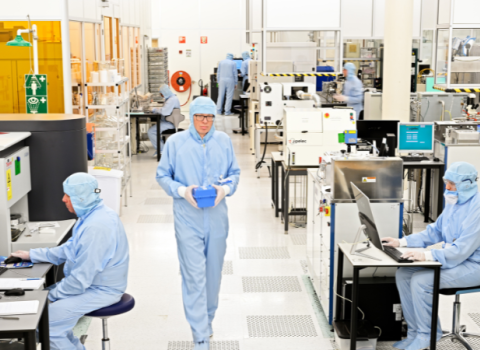More attention needs to be paid to increasing the ability of cities and regions to absorb innovation, says Sami Mahroum from the UK’s National Endowment for Science, Technology and Arts, and academic colleagues.
The ability to draw in new ideas from elsewhere and build on them is a powerful stimulus for growth. More attention needs to be paid to increasing the ability of cities and regions to absorb innovation in this way, says a new report from NESTA, the UK’s National Endowment for Science, Technology and Arts.
(This is the executive summary of the report, Innovation by Adoption: Measuring and mapping absorptive capacity in UK nations and regions by Sami Mahroum, Rob Huggins, Naomi Clayton, Kathy Pain and Peter Taylor)
Nations and regions need the capacity to draw on and absorb the external innovations and knowledge they need for innovation.
Most innovations happen outside boundaries, they are not confined to a particular company, university, cluster, or city-region. However, building such ‘absorptive capacity’ poses significant challenges for most UK regions, as policymakers too often focus on the capacity of places to create their own new knowledge and innovations, and their ability to commercialise them.
Innovation across the UK is unevenly distributed and diverse. Few places are sufficiently capable of developing successful collaborations with external partners. Each city or region’s different specialisation affects its capacity to develop innovations.
Places need to collaborate and be an integral part of cross-border networks if they are to capture external knowledge and new ideas. However, the ability of participants to benefit from external knowledge can vary significantly from one place to another, depending on the number and quality of their universities and other knowledge assets. This creates an imbalance between places.
The capacity to absorb external knowledge was identified as early as the 1950s as playing a major role in bridging economic development gaps between locations. The new ideas and innovations brought by migration, trade and foreign investment networks cannot be fully captured and exploited if a place lacks the internal ability to absorb external knowledge.
So, the capacity of places to innovate depends on internal and external sources of knowledge, which complement each other.
Traditional innovation policy has ignored the importance of external knowledge in developing local innovation capacity. But a place needs both to be able to draw in good ideas from elsewhere – an innovation absorptive capacity (AC) – and to use them to create new products and services – an innovation development capacity (DC).
This is what we describe as the AC/DC model. Absorptive capacity allows a place to identify, value and assimilate new knowledge. The development capacity of a place allows it to exploit that knowledge. The extent to which different places draw on ‘AC’ or ‘DC’ to create new value differs across economic sectors.
Five main components are essential to any innovation system. Three of these elements form the ‘absorptive capacity’ components of the AC/DC model:
(1) the capacity to access international networks of knowledge and innovation;
(2) the capacity to anchor external knowledge from people, institutions and firms
(3) the capacity to diffuse new innovation and knowledge in the wider economy.
The two components of the ‘development capacities’ element of the AC/DC model are (1) knowledge creation and (2) knowledge exploitation.
In our research we found a positive association between absorptive capacity and Gross Value Added performance – and between the AC and DC components. In other words, absorptive capacity contributes to economic growth. And places that are good at drawing on external knowledge also tend to be good at exploiting it.
Yet, while the different components of the absorptive capacities often strengthen each other, not all UK regions manage to create the necessary links between them. Indeed, the report finds that the UK needs to boost the absorptive capacity of its nations, regions, and cities. Five out of twelve UK nations and regions are poor at spreading knowledge, only four are good at creating knowledge, and only four are good at exploiting it.
We conclude with the following policy recommendations:
First, it must be made easier for cities, regions and nations to access relevant national and international sources of new knowledge, ideas, and innovation. Prizes, awards and support schemes should be created to support best practice in creating access opportunities.
Second, more should be done to draw on the knowledge of firms and universities that already make good use of knowledge developed predominantly outside the local area. Such players should be identified or created and support should be provided to strengthen their links with other players in the local economy.
Third, there should be greater investment in the development of a broader pool of firms and organisations with the capacity to spread knowledge in the local economy. Incentives and rewards should be created to encourage open forms of knowledge exchange between various types of organisations and across space, sectors, and industries.
Finally, inter-regional innovation strategies should be based around inter-regional strengths and weaknesses. Neighbouring cities and regions should be encouraged and rewarded for seeking inter-regional synergies.
Dr Sami Mahroum is Research Director, Regional & International Innovation, at NESTA; Rob Huggins is at the University of Wales Institute in Cardiff; Naomi Clayton at The Work Foundation, London; Kathy Pain and Peter Taylor are at Loughborough University.





 A unique international forum for public research organisations and companies to connect their external engagement with strategic interests around their R&D system.
A unique international forum for public research organisations and companies to connect their external engagement with strategic interests around their R&D system.